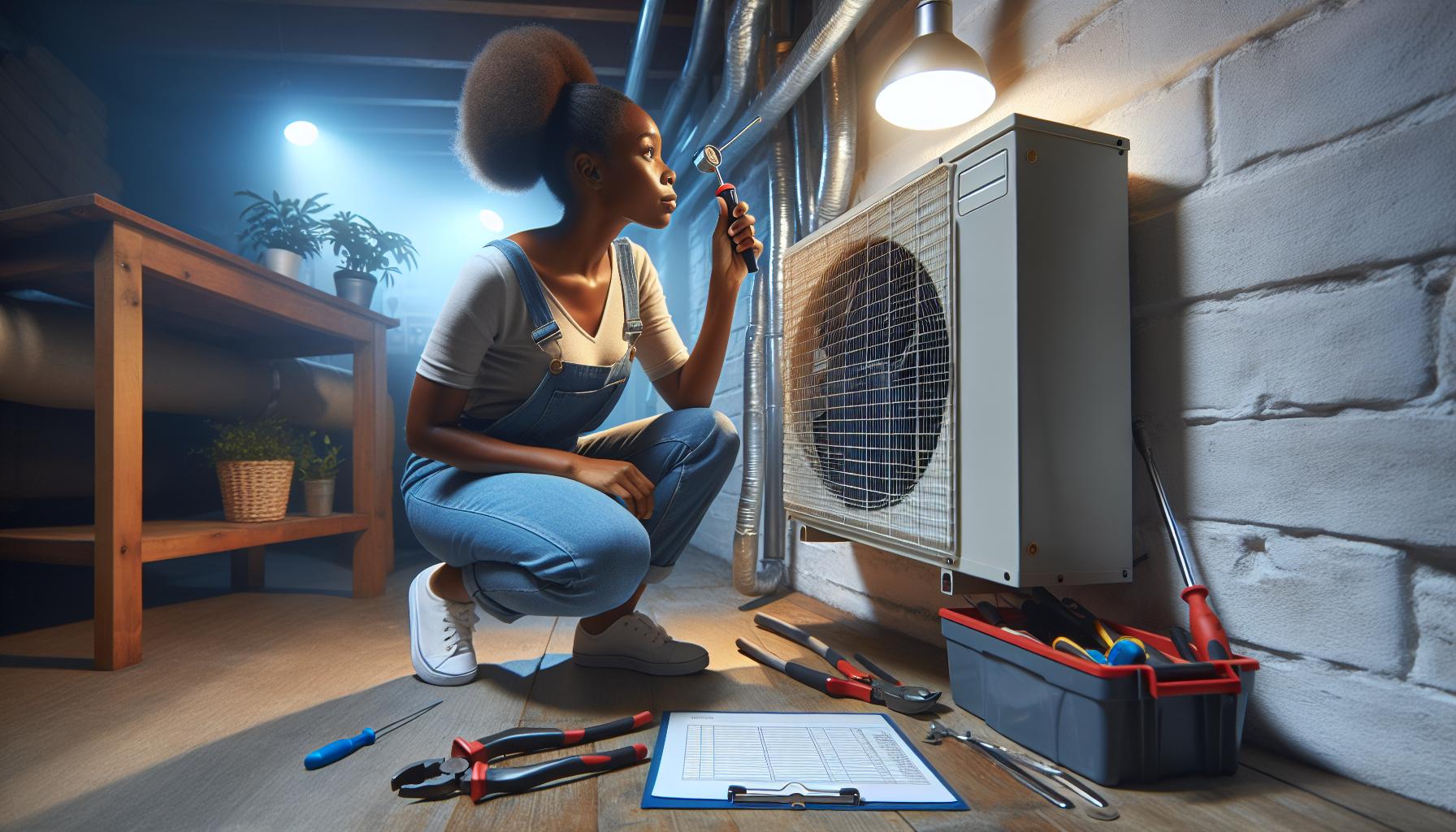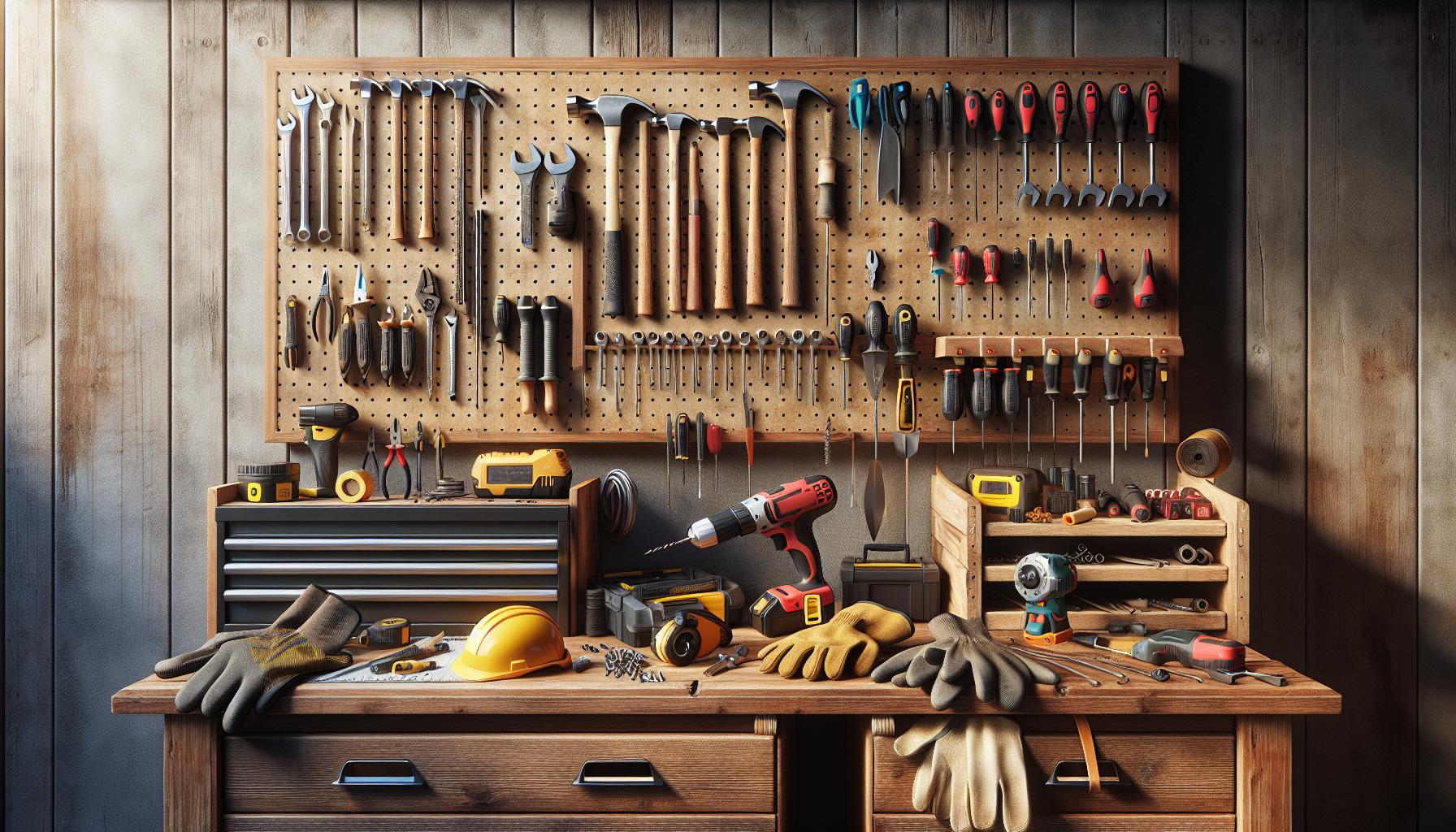As a homeowner I’ve learned that maintaining a house requires more than just cleaning and occasional repairs. A well-planned home maintenance checklist helps prevent costly damages and keeps your property in top condition throughout the year.
I’ll admit that staying on top of home maintenance tasks can feel overwhelming at first. That’s why I’ve created a comprehensive guide that breaks down essential maintenance tasks by season. Whether you’re a first-time homeowner or a seasoned property manager you’ll find this checklist invaluable for protecting your investment and ensuring your home runs smoothly.
From HVAC maintenance to gutter cleaning there’s a lot to remember. But don’t worry – I’ve organized everything into manageable tasks that’ll help you tackle home upkeep like a pro. Let’s explore the essential maintenance tasks that’ll keep your home safe comfortable and valuable for years to come.
Key Takeaways
- Regular home maintenance is crucial for preventing costly repairs and preserving property value through seasonal inspections and timely upkeep
- Essential seasonal tasks include HVAC maintenance, gutter cleaning, roof inspections in spring and fall, while winter focuses on weatherization and summer on exterior maintenance
- Interior maintenance priorities revolve around three key systems: HVAC (filter changes every 60-90 days), plumbing (quarterly checks), and electrical (monthly GFCI testing)
- A well-organized maintenance schedule should divide tasks into monthly, quarterly, and annual intervals, with monthly tasks being simple checks and annual tasks requiring professional expertise
- While many maintenance tasks are DIY-friendly (like filter changes and basic painting), some require professional attention, particularly those involving electrical, HVAC, or structural work
Essential Home Maintenance Tasks for Every Season
Seasonal home maintenance tasks protect property value and prevent costly repairs. Here’s my comprehensive breakdown of essential tasks for each season.
Spring Maintenance Checklist
- Clean gutters from winter debris
- Inspect roof shingles for damage or lifting
- Check exterior paint for peeling or bubbling
- Test air conditioning systems before peak season
- Clean window screens and check seals
- Examine foundation for winter-related cracks
- Service lawn equipment for summer use
- Schedule professional HVAC maintenance
Summer Upkeep Guide
- Replace HVAC filters monthly
- Clean dryer vents for fire prevention
- Test smoke detectors and CO monitors
- Trim branches away from power lines
- Seal driveway cracks before expansion
- Check sprinkler system efficiency
- Monitor basement humidity levels
- Inspect deck boards for loose nails
Fall Preparation Tips
- Clear leaves from gutters and downspouts
- Schedule heating system inspection
- Drain outdoor water sources and pipes
- Check weatherstripping on doors and windows
- Clean chimney before first use
- Cover outdoor furniture and grills
- Add insulation to attic spaces
- Test sump pump functionality
- Insulate exposed pipes
- Check roof for ice dam formation
- Remove snow from walkways and driveways
- Monitor indoor humidity levels
- Test garage door auto-reverse features
- Inspect attic ventilation
- Clear dryer vents of snow buildup
- Check carbon monoxide detectors monthly
Interior Home Maintenance Priorities

Interior home maintenance requires systematic attention to critical systems that affect comfort, safety and efficiency. These essential tasks protect the home’s infrastructure and prevent costly repairs.
HVAC System Care
Regular HVAC maintenance optimizes heating and cooling performance while extending equipment life. I recommend:
- Replacing air filters every 60-90 days during peak seasons
- Cleaning return air vents and ductwork annually
- Inspecting thermostats for accurate temperature readings
- Scheduling professional HVAC tune-ups in spring and fall
- Cleaning condensate drain lines to prevent clogs
- Testing carbon monoxide detectors monthly
Plumbing Maintenance
Proactive plumbing care prevents water damage and maintains proper functionality. Key tasks include:
- Checking faucets and pipes for leaks quarterly
- Testing water pressure levels every 6 months
- Inspecting toilet components for proper operation
- Cleaning shower heads and faucet aerators annually
- Flushing water heaters to remove sediment buildup
- Examining caulking around tubs, sinks and toilets
- Testing GFCI outlets monthly using the test/reset buttons
- Checking for warm or discolored switch plates
- Verifying smoke detector operation every 30 days
- Examining electrical cords for fraying or damage
- Updating outlet covers in high-traffic areas
- Monitoring circuit breaker performance
| Maintenance Task | Frequency | Priority Level |
|---|---|---|
| Air Filter Changes | 60-90 days | High |
| GFCI Testing | Monthly | High |
| Plumbing Leak Check | Quarterly | Medium |
| Water Heater Flush | Annually | Medium |
| HVAC Professional Service | Bi-annually | High |
Exterior Home Care Requirements

Exterior maintenance protects a home’s structural integrity from weather damage. Here’s a comprehensive breakdown of essential outdoor care tasks by key areas.
Roof and Gutter Maintenance
A well-maintained roof system prevents water infiltration into the home’s structure. I recommend inspecting shingles twice yearly for signs of damage: curling, cracking or missing pieces. Clean gutters quarterly, removing debris like leaves branches pine needles to prevent water overflow. Install gutter guards to reduce maintenance frequency by 75%.
| Roof Component | Inspection Frequency | Expected Lifespan |
|---|---|---|
| Asphalt Shingles | 2x per year | 20-25 years |
| Gutters | 4x per year | 20-30 years |
| Gutter Guards | 1x per year | 10-15 years |
Siding and Paint Upkeep
External siding requires regular cleaning to prevent mold mildew buildup. Power wash vinyl siding annually using appropriate pressure settings (1,300-1,600 PSI). Inspect painted surfaces for peeling chipping bubbling every 6 months. Touch up damaged paint areas immediately to prevent wood rot. Schedule complete exterior repainting every 5-7 years depending on sun exposure weather conditions.
Foundation and Drainage
Foundation maintenance focuses on preventing water damage soil erosion. Grade soil away from foundation walls maintaining a 6-inch slope over 10 feet. Clear drainage systems of debris blockages monthly during rainy seasons. Check foundation walls for cracks settling annually measuring any changes wider than 1/4 inch. Install French drains in areas with persistent water pooling directing water 10+ feet away from the foundation.
| Drainage Component | Maintenance Task | Frequency |
|---|---|---|
| Soil Grading | Check slope | 2x per year |
| Foundation Walls | Crack inspection | 1x per year |
| Drainage Systems | Clear debris | Monthly |
Tools and Supplies Needed for Home Maintenance

Basic Hand Tools
- Hammer (16-ounce claw hammer for general repairs)
- Screwdrivers (Phillips head sizes #1 #2 flat head sizes 1/4″ 3/8″)
- Pliers (needle-nose channel-lock adjustable)
- Wrench set (adjustable wrench combination wrench set)
- Utility knife (retractable blade with spare blades)
- Level (24-inch digital or bubble level)
- Tape measure (25-foot retractable)
- Putty knife (flexible 4-inch blade)
Power Tools
- Cordless drill (18V with various drill bits)
- Shop vacuum (wet/dry with multiple attachments)
- Leaf blower (electric or battery-powered)
- Power washer (1500-2000 PSI electric model)
Safety Equipment
- Safety glasses (ANSI Z87.1 certified)
- Work gloves (cut-resistant leather)
- Dust masks (N95 rated filtration)
- Ear protection (NRR 22dB or higher)
- First aid kit (OSHA-compliant)
- Fire extinguisher (ABC-rated 10-pound)
Cleaning Supplies
- All-purpose cleaner
- Glass cleaner
- Disinfectant spray
- Microfiber cloths
- Scrub brushes
- Bucket (5-gallon capacity)
- Extension pole (8-12 feet adjustable)
- Sponges (cellulose non-scratch)
- Caulk (silicone waterproof)
- Wood filler (interior exterior grade)
- Duct tape (professional grade)
- WD-40 (multi-use lubricant)
- Sandpaper (various grits 80-220)
- Paint brushes (synthetic bristle various sizes)
- Air filters (MERV 8-13 rated)
- Light bulbs (LED equivalent 40-100W)
| Tool Category | Average Cost Range | Replacement Frequency |
|---|---|---|
| Basic Hand Tools | $100-300 | 5-10 years |
| Power Tools | $200-600 | 3-7 years |
| Safety Equipment | $50-150 | 1-2 years |
| Cleaning Supplies | $30-80 | 3-6 months |
| Maintenance Materials | $75-200 | As needed |
Creating a Home Maintenance Schedule
A structured maintenance schedule divides tasks into monthly quarterly, and annual intervals based on their complexity and importance. This organization method ensures regular upkeep while preventing task overlap and maintenance gaps.
Monthly Tasks
Monthly home maintenance focuses on quick, routine checks that prevent small issues from escalating:
- Clean or replace HVAC filters
- Test smoke detectors and carbon monoxide alarms
- Inspect fire extinguishers for proper pressure
- Clean range hood filters
- Check for plumbing leaks under sinks
- Vacuum refrigerator coils
- Clean garbage disposal with ice and vinegar
Quarterly Projects
Quarterly maintenance addresses seasonal changes and more involved tasks:
- Deep clean all appliances (dishwasher, washing machine, dryer)
- Clean gutters and downspouts
- Trim trees and shrubs away from the house
- Test water heater pressure relief valve
- Lubricate garage door hardware
- Check caulking around windows and doors
- Inspect grout and caulk in bathrooms
Annual Inspections
Annual tasks require professional expertise or thorough evaluation:
| Inspection Type | Best Season | Average Cost |
|---|---|---|
| HVAC System | Spring/Fall | $150-300 |
| Roof Inspection | Spring | $200-500 |
| Chimney Sweep | Fall | $150-250 |
| Termite/Pest | Spring | $100-200 |
| Septic System | Summer | $300-500 |
- Professional carpet cleaning
- Dryer vent cleaning
- Window washing
- Foundation inspection
- Exterior paint touch-ups
- Drain water heater
- Test sump pump operation
Professional vs DIY Maintenance Tasks
Professional maintenance tasks require specialized skills, tools or licenses while DIY tasks involve basic repairs manageable with common household tools.
Tasks for Professionals
Licensed professionals handle these specialized maintenance tasks:
- Electrical system upgrades including panel replacements circuit installations
- Major HVAC repairs such as compressor replacement furnace installation
- Advanced plumbing work like main line repairs sewer system maintenance
- Structural modifications including load-bearing wall removal foundation repairs
- Roofing installation complete tear-offs chimney repairs
- Gas line installations furnace maintenance water heater replacement
DIY-Friendly Tasks
These maintenance tasks require basic tools standard safety equipment:
- Air filter replacement in HVAC systems furnaces
- Gutter cleaning debris removal downspout maintenance
- Caulking windows doors bathroom fixtures
- Weather stripping installation door sweeps window seals
- Basic painting interior walls trim exterior touch-ups
- Light fixture installation switch plate replacement bulb updates
| Task Type | Average Cost (Professional) | DIY Cost | Time Investment |
|---|---|---|---|
| HVAC Service | $150-300 | $20-50 | 1-2 hours |
| Gutter Cleaning | $100-250 | $25-40 | 2-3 hours |
| Interior Painting | $2-4/sq ft | $30-100 | 4-8 hours/room |
| Basic Plumbing | $75-130/hr | $10-50 | 1-4 hours |
Safety Considerations
Critical safety protocols for maintenance work:
- Shut off main power before electrical work
- Use protective equipment including goggles gloves masks
- Follow manufacturer instructions for tool operation
- Keep proper ventilation during painting chemical use
- Maintain stable ladders scaffolding for height work
- Store cleaning supplies chemicals in secure locations
Safety equipment costs range from $50-200 for basic protective gear including safety glasses respirators work gloves knee pads.
Conclusion
I’ve shared my comprehensive guide to home maintenance because I know firsthand how crucial it is to protect your investment. A well-maintained home not only saves money in the long run but also provides peace of mind for you and your family.
Whether you’re tackling seasonal tasks checking your HVAC system or maintaining your home’s exterior I encourage you to use this guide as your roadmap. Remember that some jobs are perfect for DIY while others require professional expertise.
By following this organized approach to home maintenance you’ll create a safer more comfortable living space while preserving your property’s value for years to come. Start implementing these maintenance practices today and you’ll thank yourself tomorrow.

